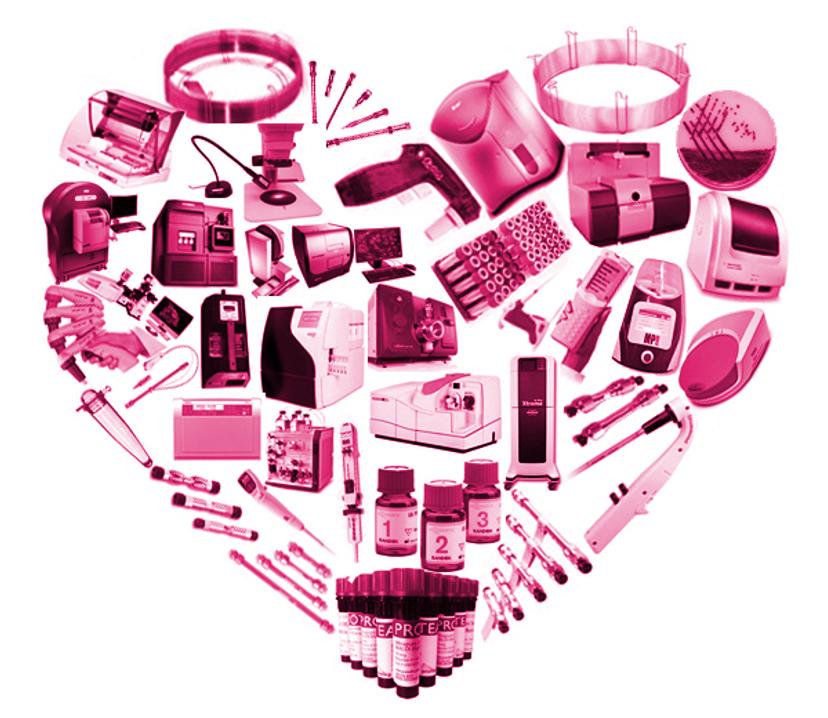The Science of Falling in Love
14 Feb 2014

With Valentine’s Day capturing the hearts of romantics around the world this month, Lois Manton spoke to Research Professor Helen E. Fisher, a member of the Centre for Human Evolution Studies in the Department of Antropology at Rutger University in New Jersey, USA, about the science of falling in love. Helen has published extensive research and five books on the evolution and future of human sexuality, monogamy, marriage, gender differences in the brain, and more recently, human personality types and why we fall in love.
The same, but different
“I am an identical twin,” says Dr Fisher, “and long before I knew there was a nature/nurture issue, I was very busy gauging how much of my own behavior was biological. I was interested to know why we are all alike, in our sexuality and our family formation, as this is the way we pass on our DNA onto tomorrow – with sex and love. Female animals have a period of heat where they copulate, whereas female humans can copulate all month long. This led me to the question – could we have evolved three distinct different brain systems from mating and reproduction?”
- Sex drive: (testosterone) where one is looking for a range of partners.
- Romantic love: (dopamine) that enables you to focus your energy on just one partner.
- Attachment: (oxytocin and vasopressin) that enables you to stay with that partner at least long enough to raise a child through infancy.
“So, with that idea I began to study brain’s circuitry of romantic love.”
Romantic love – an obsession
“The brain system for romantic love is below the cortex (where you do your thinking); and below the limbic system (where you do a lot of your feeling). When you feel that rush of intense romantic love for somebody, many brain regions become activated. One of these is the ventral tegmental area, which is connected to the brain reward system. It makes and sends dopamine, a natural stimulant, to many brain regions. Among these is the cognitive nucleus, a relay station that continues to send messages to the cortex and to emotional areas. This brain system evolved millions of years ago to help people focus on a particular individual to start the mating process.”

To mark Valentine's Day, SelectScience® is offering you the chance to win a $100 Amazon voucher (or equivalent currency)* to treat the one you love. Simply write a review on the products you are passionate about
The experiment
Dr Fisher’s key experiment consists of more than 100 people in three different stages of love: people who are madly in love; people rejected in love; and people in long-term love. Each person is placed in a functional magnetic resonance imaging (fMRI) brain scanner. They bring in two photographs, a photograph of their sweetheart and a neutral photograph. Firstly, they will look at the photograph of their sweetheart and think of all their romantic, but non-sexual, times together. Then, to cleanse the brain of that powerful emotion, they are given a large number and asked to count back in increments of seven. This drives all the blood away from the emotional centers in the brain and into mathematical centers. The neutral photograph is then shown and they will think of the boring times, or nothing at all. In the scanner, they are looking at positive, count-back, neutral, count-back, positive, count-back, neutral, count-back for six cycles and the experiment lasts 12 minutes.
Measuring love
Dr Fisher has collaborated with Dr Lucy Brown from the Albert Einstein College of Medicine, who deals with the interpretation the brain scans. “Dr Brown studies all the scans of the positive (looking at your sweetheart), and the neutral, and she puts them together as to cancel out what they have in common, leaving the brain regions that are active for romantic love,” Dr Fisher describes. “The main characteristics of romantic love are intense cravings to be with the person, intense motivation to win this person, and obsessive thinking. It is an addiction, a positive addiction, an addiction to win life’s greatest prize – a mating partner.
“There is more to love than biology”
With all this knowledge, could we create a potion to make people fall in love? Dr Fisher explains: “We already have certain love potions. If you take enough cocaine, you are going to drive up the dopamine system and you might fall in love with the person that night, but the next morning you will have regrets. Not only is there biology to love, but there is your big cerebral cortex where you will have acquired all your childhood experiences, and wants, and needs. For example, what attracts you to someone, what you think is intelligent, funny, healthy and so on. These things are not going to change by taking drugs.”
“If you gave me all the dopamine in the world, would I fall in love with Hitler? I don’t think so. There is more to love than biology, there is your culture, your background, and there is your upbringing.”
Dr Fisher is also the author of the Singles in America (SIA) campaign, which is the most comprehensive national study of singles in America. Click here to find out more.
